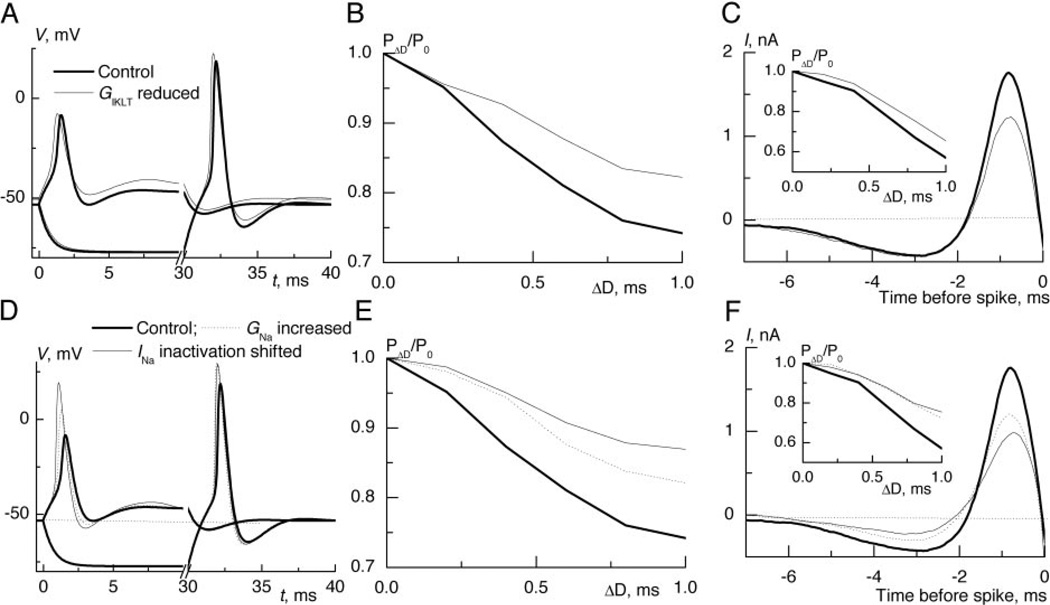FIG. 5.
In the model, reduction of IKLT or strengthening of INa weakens coincidence detection. A: model neuron fired phasically before and after 25% reduction of IKLT conductance. Note that spike amplitude was almost unaffected. The reduction of IKLT weakened sensitivity to coincidence for periodically modulated input (B) and for signal EPSGs (C, inset). C: slower rising currents could trigger spike generation as evident from reverse-correlation traces. D: the amplitude of depolarization evoked spike was enlarged more by the 10-mV shift of inactivation than by 50% increase of maximal sodium conductance. E: increased strength of INa at rest reduced sensitivity to coincidence for periodically modulated inputs (E) and signal EPSGs (F, inset). F: the shift of inactivation to depolarized potentials resulted in a strongest reduction of the dip and rising rate of mean spike evoking current.

